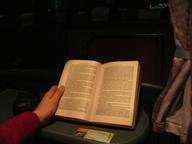Quiz Answer Key and Fun Facts
1. The poet was grief-stricken by the deaths of his eleven siblings, his friend Richard West, his aunt Mary and dismayed after an attack by highwaymen on his childhood friend Horace Walpole, all of which led him to meditate deeply on death. What was the poem's original title?
2. Other writers have taken phrases and lines from this poem and used them as book titles; children over the centuries have memorized it. Almost every line is a quotable quote, but what's the first line of the poem?
3. Literary detectives have tried to identify the original churchyard that provided the inspiration for the poem. Incidentally, the poet himself is buried here. Which one could it be?
4. Several 18th Century poets were known for their depressing meditations on dying. Images of funerals, last rites, urns and ashes filled their poems. Which one of these is not one of the "Graveyard Poets"?
5. The poet began writing the "Elegy..." in 1741, finished it in 1750. It went through several revised versions after it was published. Which magazine was it first published in on 16 February 1751?
6. "Elegy Written In a Country Churchyard" is a poem that was at one time a popular inclusion in textbooks and anthologies around the world. Many English poets have been influenced by the themes, language and setting of Elegy. Who was the English poet who translated part of it into Latin?
7. There are several rhyming schemes in poetry. The poet followed a classical scheme for this poem with its weighty theme. Which one of these is the rhyming scheme for "Elegy"?
8. The selection of words and phrases in the poem is superb. Writers and artists down the years have been inspired by them. One of the lines was used as the title of a book by Thomas Hardy. Which one was it?
9. The poem "Elegy Written in a Country Churchyard" refers to power and glory that fade, and to illustrate these, three famous figures are named in the poem. Who are they?
10. Let's finish with the last line of the poem. It formed part of the Epitaph section. Which one was it?
Source: Author
SuLee
This quiz was reviewed by FunTrivia editor
agony before going online.
Any errors found in FunTrivia content are routinely corrected through our feedback system.

